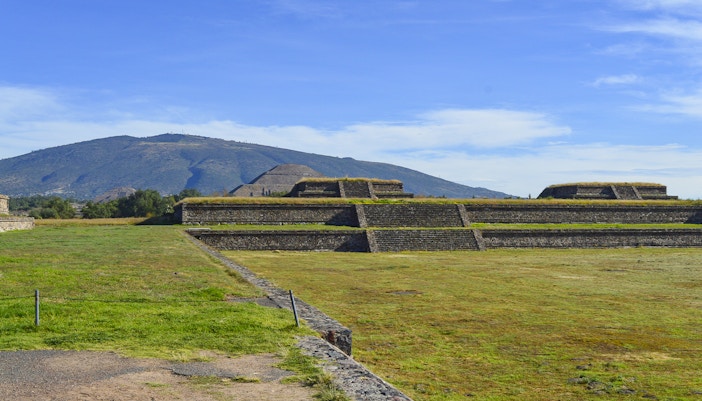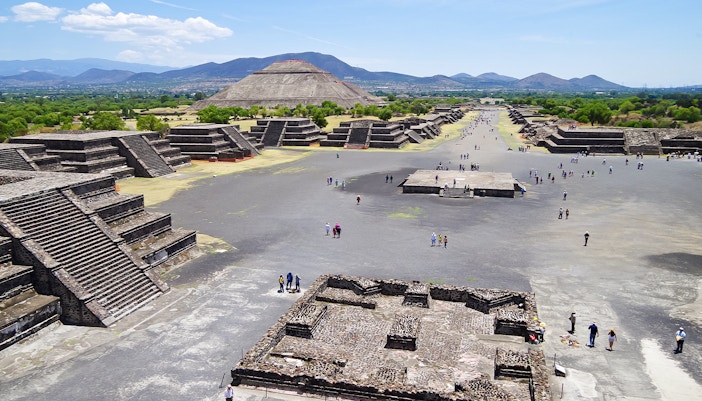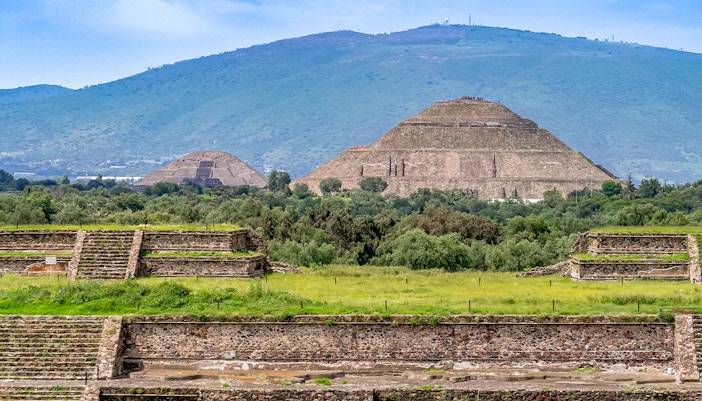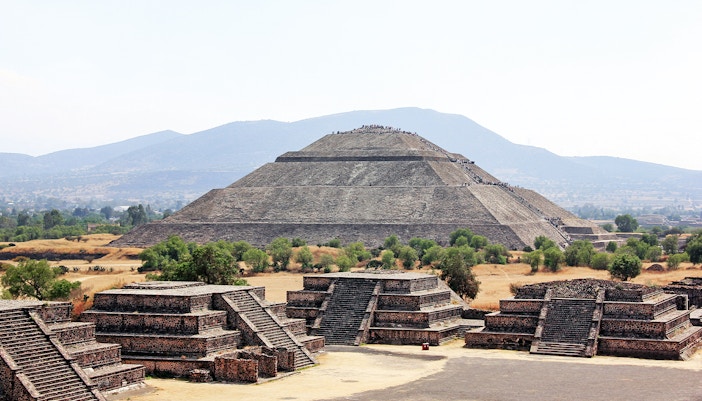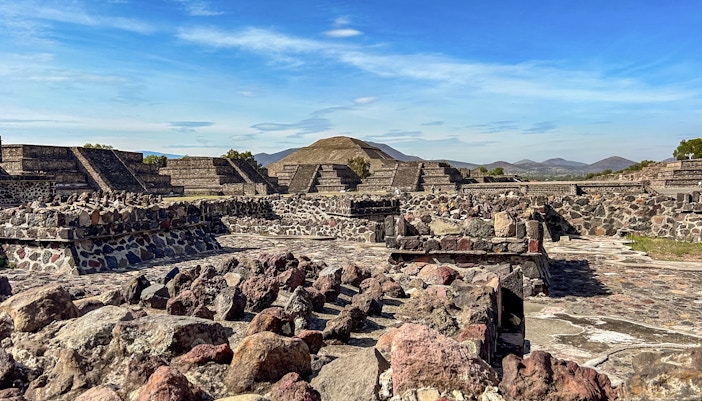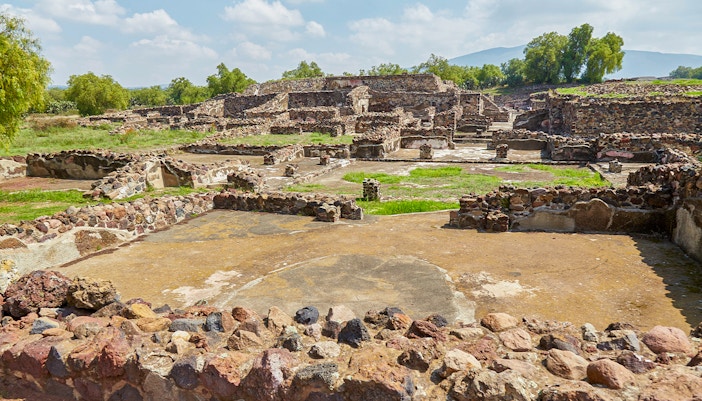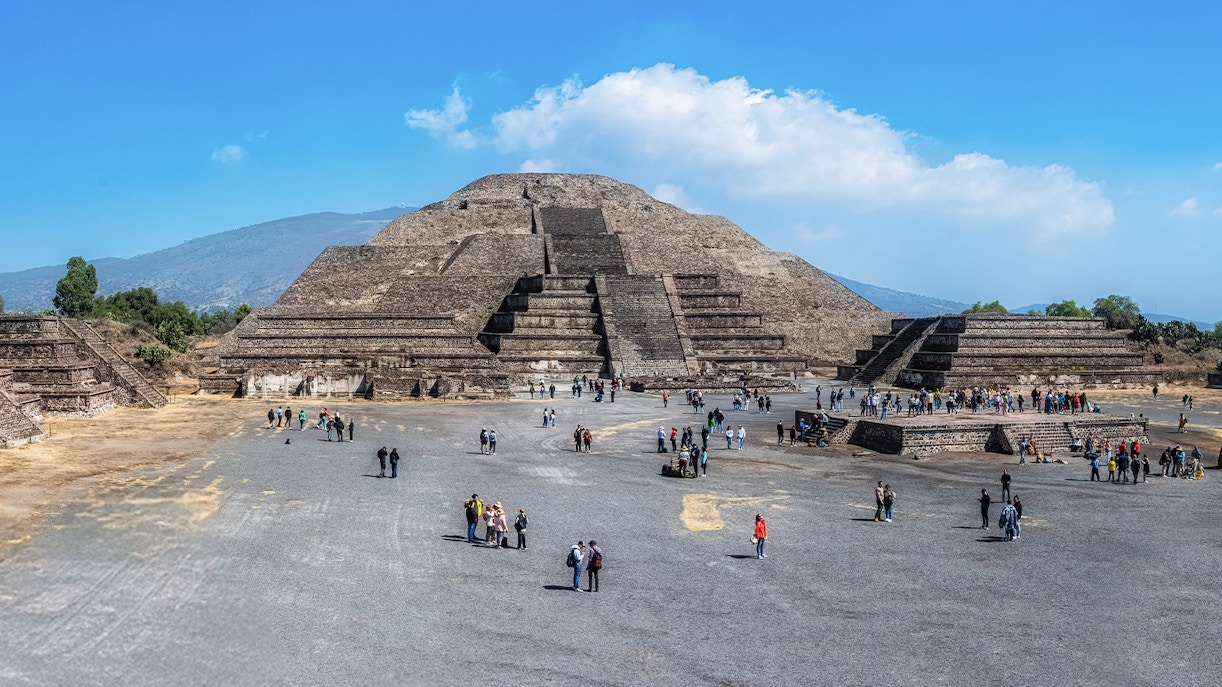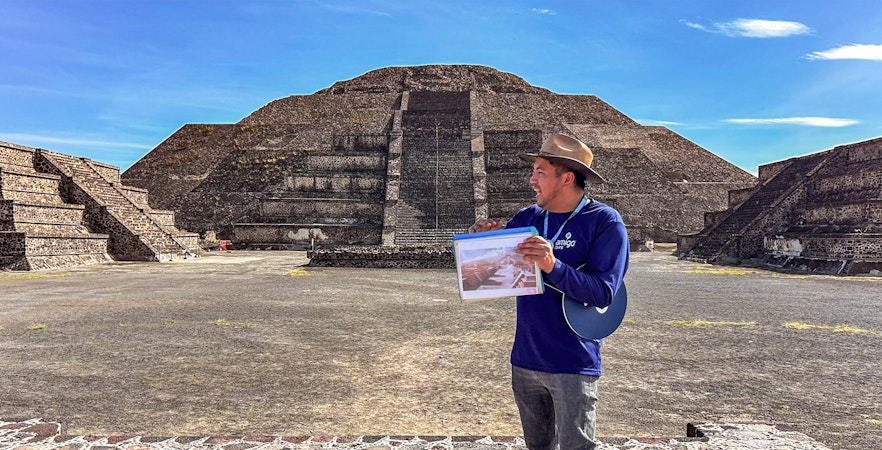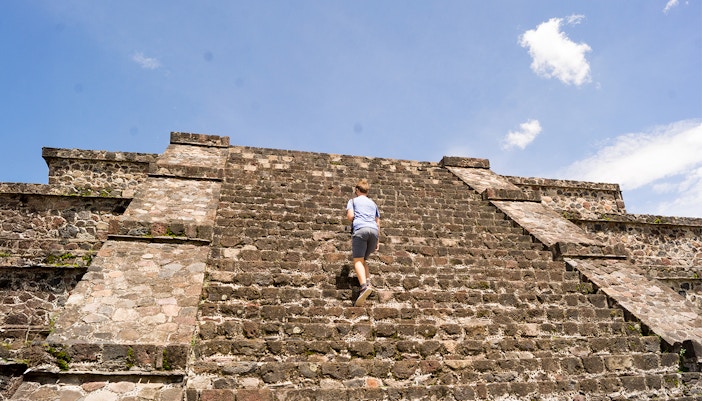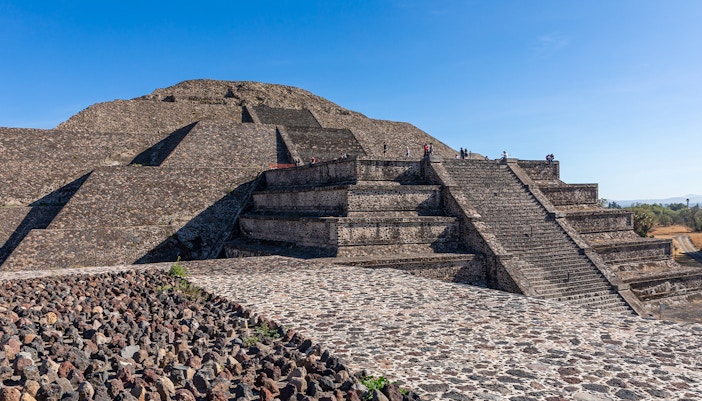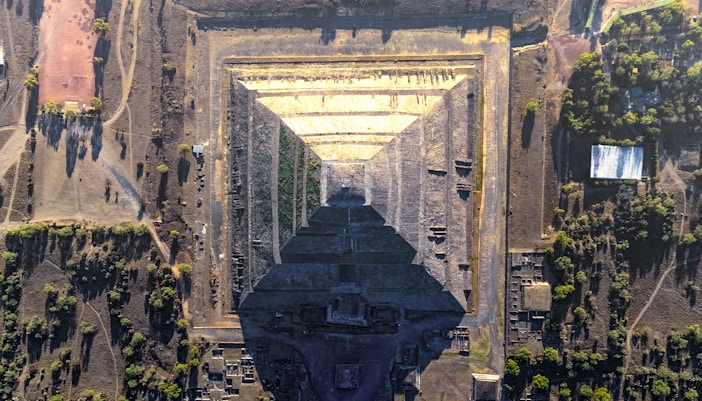Around 100 BCE, Teotihuacán grew from a small settlement into a major urban center. Its original inhabitants, whose identity is still unknown, laid out a meticulously planned city with a central axis and grid-like streets. This early period was defined by the start of large-scale construction, reflecting a highly organized society with the ability to mobilize a vast labor force.

